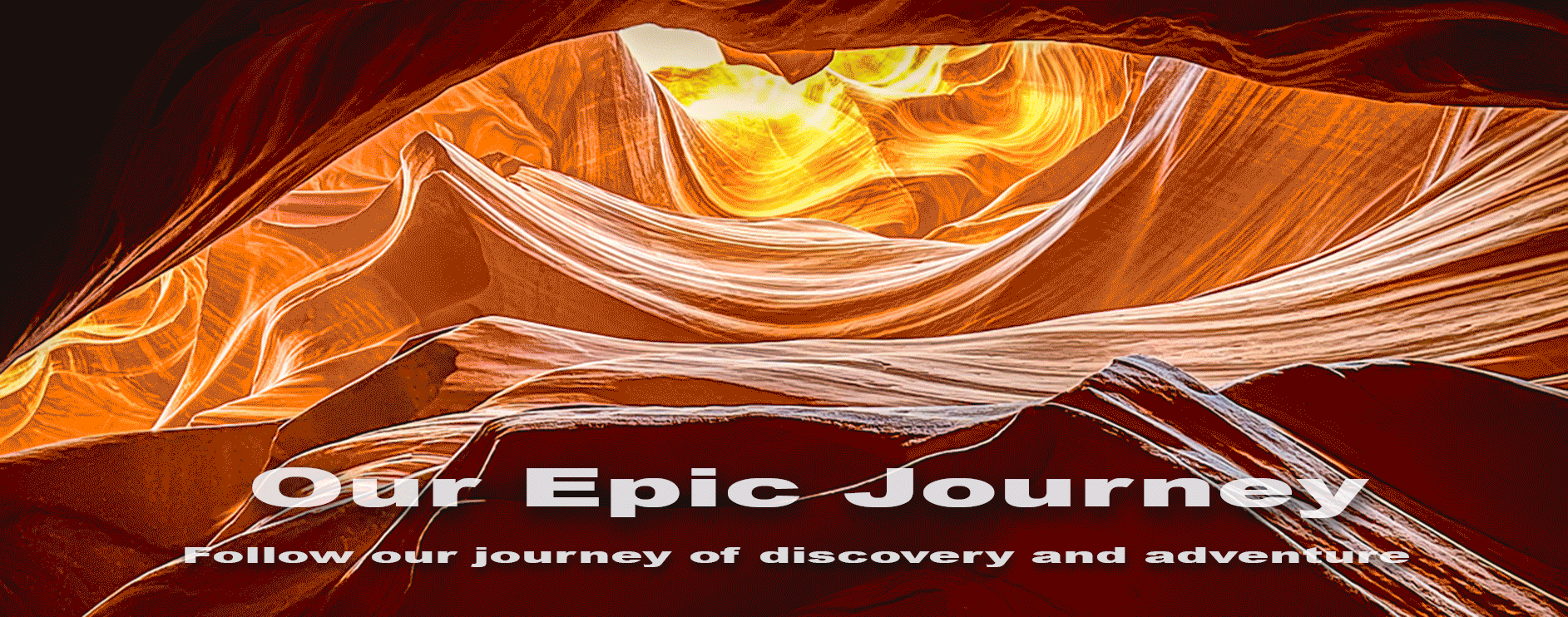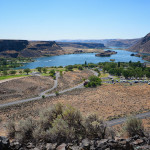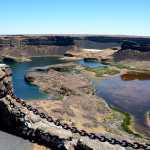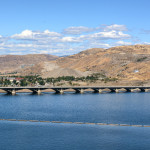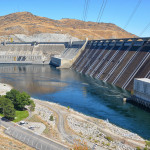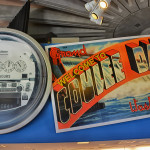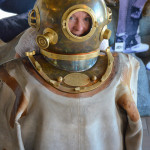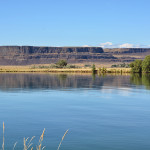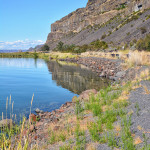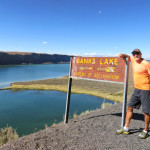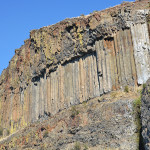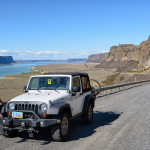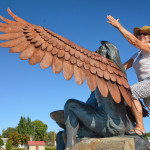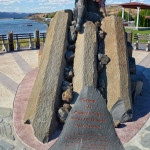After leaving Salt Spring Island we flew to San Diego to spend time with Kevin, Ericka and our sweet, adorable grand daughter Harper. When we returned to Canada we picked up our Sherpa and headed south back to the States on our way to Rapid City, SD. Our first stop was at the Suncrest Resort Campground, in Moses Lake, WA. And today we our going to travel the Coulee Corridor Scenic Byway on our way to the Grand Coulee Dam. The Coulee Corridor is an amazing 150 mile road trip revealing the story of the ice age floods that occurred around 13,000 years ago. The scenery along the route is both magnificent and unique. We stopped at Soap Lake which is known for its mineral-rich water and mud. In the early 20th century, people flocked to Soap Lake in search of a cure. We took photos of the bronze stature with steel wings that stated “Calling the healing waters”, the worlds first human figure sundial. Following the scenic byway, shaped by the massive Ice Age floods, we saw basalt cliffs, green farms and fields dotted with thousands of lakes nourished by the Grand Coulee Dam. We arrived at the Dry Falls State Park, which is the site of a former waterfall which is now a dry cliff, 400 feet high and 3.5 miles wide. When the floods occurred the waterfall was ten times the size of Niagara Falls. Today it is filled with lakes and wildlife. Then we arrived at the Grand Coulee Dam, at 550 feet high, it is the largest concrete structure in the US. It is a gravity dam on the Columbia River, built between 1933-1942, to produce hydroelectric power and irrigation. It has three power stations and it is the largest electric producing facility in the US. It stands 550 ft tall, 5,223 ft long, 30 ft wide at the crest and 500 ft wide at the base.
The Grand Coulee Dam flooded over 21,000 acres of prime bottom land where Native Americans had been living and hunting for thousands of years. The town of Kettle Falls, WA was actually relocated, and the reservoir known as Lake Roosevelt flooded 70,000 acres. However, the Grand Coulee Dam was a great feat of engineering that brought irrigation to an arid desert landscape, and we had spectacular panoramic views of the dam. We visited the Visitors Center that was built in the late 1970’s and enjoyed a film on the construction of the dam and explored the history of the area.
